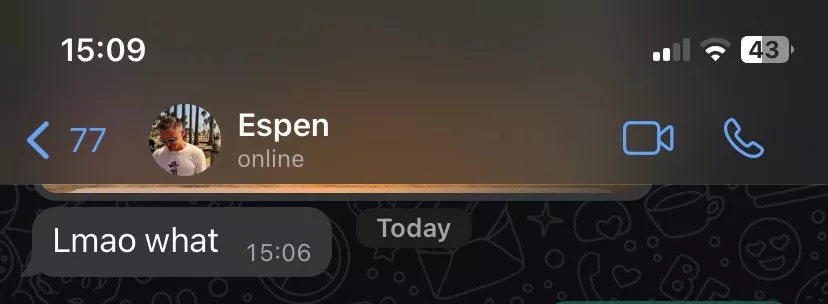The final table of the WSOP Online Main Event, where Bert Stevens won $2.8 million, had some interesting hands.
One of them, played in 3-max, interested Patrick Leonard and caused a lively discussion on his Twitter.
Sick ICM spot for life changing money.
What would you do???
You’re in SB with 66m
Crazy BB with 290m who’s been shoving a lot
Button 3.8m and in the 4m bb next hand
1st- $2.8m
2nd – $2m
3rd – $1.5m
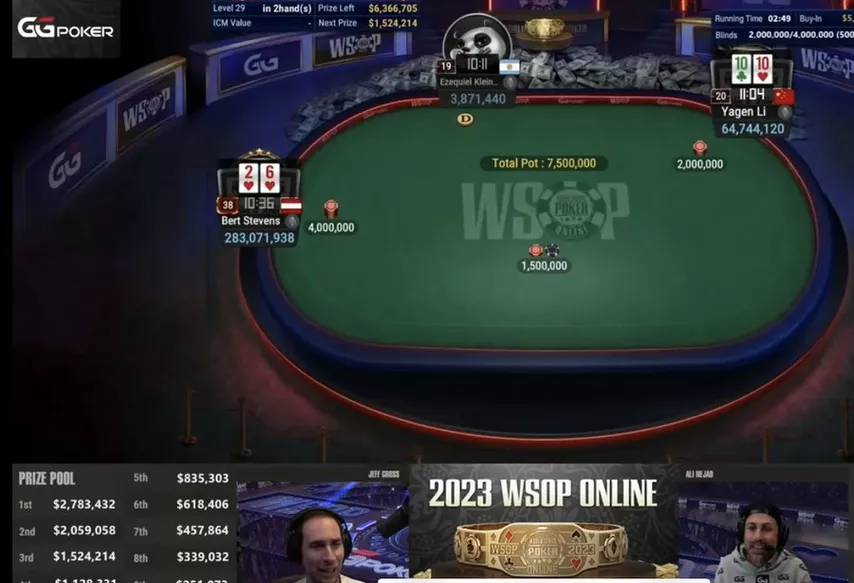
The Chinese player folded and ended up in 2nd place.
The tweet received more than 200 comments, including from famous players. The hand took place on GGPoker.
Alex Weiss:
Opinion of a former hyperturbo SNG top reg. Much depends on the level of play of the chip leader. Against the majority you need to fold, but sometimes you can go all-in.
In this situation, the big stack should fold quite often from the small blind to keep the short guy in the game and continue to play with three. If this has already happened, then the player with TT in 3-max has a very bad expectation, so it is better to push. For example, if the chip leader folds to the SB, open-shoves from the button, and plays according to the situation on the BB, then each round, in fact, brings him at least 1bb profit. This is the right game, but in reality this happens very rarely.
In response to a push, the chip leader should generally fold quite often. Not only because of the opponent's overly tight range on the SB, but also to maintain a situation where he can steal unhindered. Due to the influence of ICM, we still will not be able to gain an advantage if the chip leader is tight. However, many players do not understand well what to do in such a situation, so they will make erroneous calls, which will greatly harm us.
“Fucking Alex Weiss,” Patrick was impressed by the analysis. – Stay in the cave... For the sake of all of us. You're too smart. Thanks for the post.
– Most likely the correct action would be to fold, assuming that Giraf only calls from AJs (although against a pushing range, they should probably be folded too)
“Solver confirms everything you wrote,” Ismael Boyang was amazed. – How do people know the correct actions in completely random spots? How confident were you about the range to fold or call, 75% or 90%? And how should we take into account changes in the chip leader's calling range?
“After analyzing thousands of situations, a feeling appears,” Fedor explained. – Obviously, you need to play very tight in this spot. With QQ+ we push 99%, with JJ+ 95%, with TT+ 50%. But if he calls from AJs, then with TT it is a 95% fold. In general, I think that this is the very borderline hand that I am not sure will be played.
Girafganger7:
– Judging by the fact that he thought for three minutes before folding, I’ll assume that according to the solver, this is the correct action.
Galen Hall:
– I thought there were only two options here – a brave limp to provoke the opponent or a cowardly push. But all commentators write about folding. What's happening?
– If we get a push to limp, will we have to fold? – Brian Hastings clarified. – I could be wrong, but I’m sure it’s correct.
“You are a free man, Brian,” Galen replied ironically.
Ryan DePaulo:
– We limp and act according to the situation. Everyone writes about push or fold, but there are other options. I would probably limp call a raise or limp fold a push.
“I’d rather shoot myself than play limp-fold to a push,” Nick Palma disagreed.
Matt Salsberg:
– We raise 60 million and fold to the push.
QuestionQuest:
– Yes, there is a lot of money up for grabs, but you need to breathe out and push. This is how we will print money at a distance.
“You look at the world too optimistically if you hope to gain distance in such situations,” said Pads.
“In order not to respond to all the comments, I decided to record a video,” Patrick said a couple of hours later.
In the big blind is everyone's favorite Girafganger with a huge stack, the player on the button has less than one blind, and our hero from China in the SB has 66 million and a monster hand. 3 max, blind for blind, depth of 15 blinds, it would seem, what else could you dream of? But it seems that he is not at all happy with such a strong hand. He seems like he'd be happier with something like T2o so he doesn't have to put so much stress on himself.
I asked on Twitter what to do in such a situation. And I got a lot of completely different options. A couple of responses found widespread support.
1. “We’ve already won $1.5 million, don’t care about everything – let’s push.”
2. “Payjump $500k, easy fold.”
Let's first look at what the solver advises us.
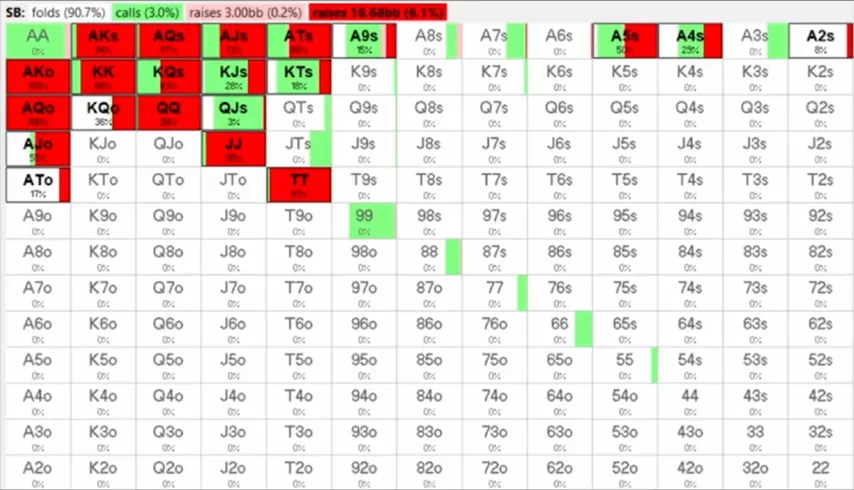
Against an aggressive opponent, we don’t trap even with QQ and KK, but simply push. Our goal is to complete the hand as soon as possible. No limping with T9s, just throw away 88, 77, KJo, QJo, and so on. Although these are all very strong hands for blind-to-blind situations.
We play an extremely tight range – only 9% of hands, 6% of which we push. We only limp with 3%, this includes pocket aces, a few suited aces, and some other hands with good post-flop potential, such as QJs, KTs, and KJs. This is due to the fact that we have a tight range and it is obvious that Giraf will not push 100% of his hands to our limp. Although with aces, we naturally want to see all in the most. There are also some middle pocket pairs in the limping range so that on a 458 flop Giraf can't put us on just aces or KJs and try to knock us out of the pot.
Please note that our hand is – the solver advises pushing, like other strong pairs. But this is only if Giraf also calls using GTO.
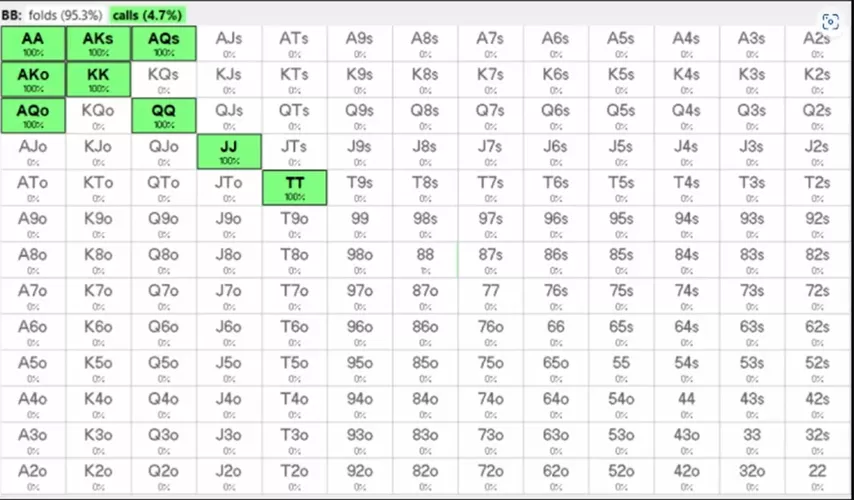
But, to be honest, I’m not very sure about the realism of such a range. Giraf isn't under any pressure, he's essentially calling for the championship here and could very well risk sixty-five million with a pair of nines or AJs.
In reality, his range will be slightly different, but I can't just add nines there, it would be too advantageous for a player with tens. I think a reasonable calling range would look something like this:
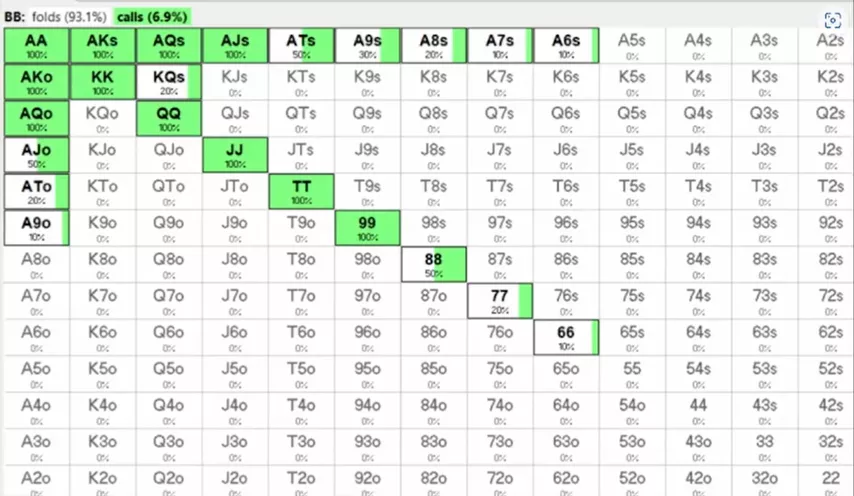
As soon as we slightly expand our opponent's range, the tens immediately go into a pass.
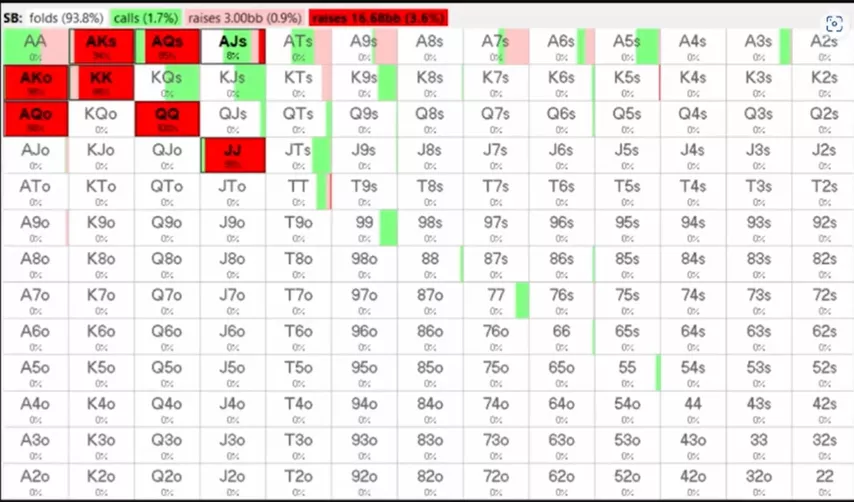
Moreover, we added hands that they are excellent against – 99, 88, ATs, AJo. But our range still dropped from 9% to 6%, and 94% of hands simply fold.
What is the correct answer? A very difficult situation. It all depends on how well we understand Bert's game. Could he call wider just because he has thousands of people watching and wants to win the tournament quickly? In any case, you need to think carefully about everything. Only one thing is obvious – tens are definitely not suitable for limping. We either push in hopes of picking up the blinds or fold if we're afraid he'll call wide enough.
There are a few other important points to consider. Doubling gives us real chances for the championship, and first place in such a tournament is a huge event that will bring additional profit to the winner. Espen Jorstad earned $6 million in sponsorship deals after his victory! Seriously speaking, I would estimate the additional EV from first place to be at least $200k (Ed. – when we are talking about a little-known Chinese player, this amount seems very exaggerated). This is another argument in favor of pushing.
And here’s how ICM payouts change if the player doubles:
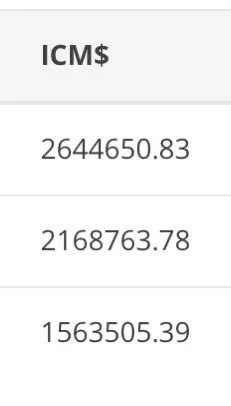
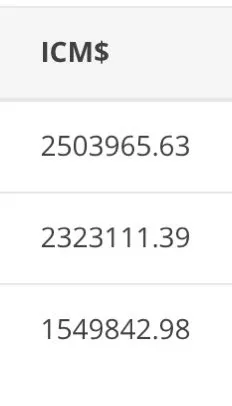
If we lose, we lose $600k, and doubling will only add 10% to the expectation. There is also something to think about here.
“If in the next hand, Giraf folds to SB (and he should do this often), I’m all in,” Shaun Deeb watched the video and agreed with Alex Weiss.
– Looks like he didn’t throw much away with SB. Here are the two previous hands.
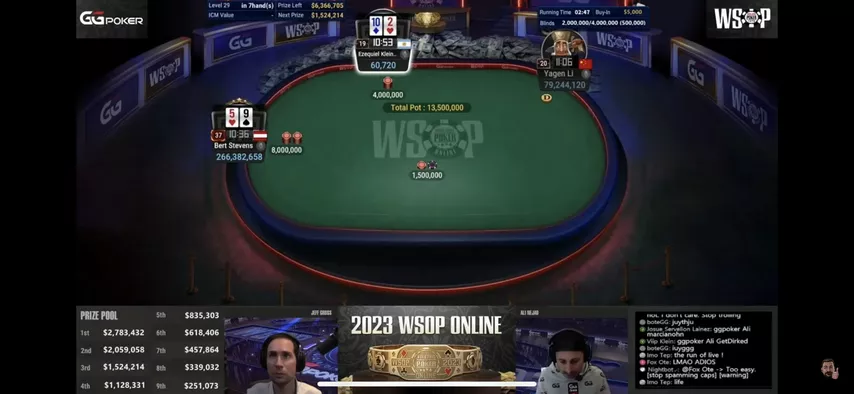
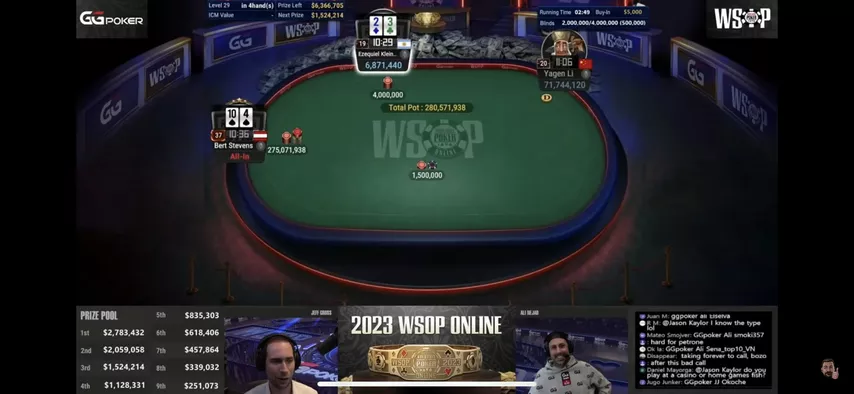
“I’m shocked that he’s pushing here,” Sean was amazed. – Considering that the second stack has 20bb, in my opinion, this is the most obvious spot when the chip leader must throw away any two cards.
Espen Jørstad also learned something new from the analysis.
